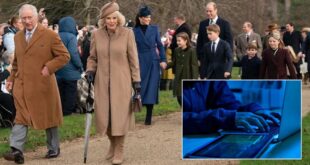Once upon a time, a monarch personally led their forces into battle, serving not only as king but also general. This tradition lasted for hundreds of years, from the days of the Anglo-Saxons through the Tudor period and beyond. Several of Shakespeare’s history plays are dedicated to monarchs and their great battles, such as King Henry IV, Henry V, and Richard III. The last monarch to personally lead troops was actually King George II in the War of Austrian Succession. However, the Royal Family’s relationship with the military did not end there, and the expectation that its members would serve in the armed forces continues to this day.
Following King George II, very few monarchs and heirs have not spent time in military service. While King George III seems to have skipped this and moved right to becoming the head of the armed forces on his accession, King George IV twice served as a colonel in the British Army until he became king in 1820. George’s brother, King William IV, served in the Royal Navy for eleven years, retiring just before the start of the Napoleonic Wars. He would be the last monarch to serve active duty as Queen Victoria did not hold any active rank, and she nixed her son, King Edward VII’s desire to join the British Army as a soldier.
As Edward felt differently from his mother, he pushed his own sons into active careers with the Royal Navy. As a prince, King George V had expected to spend most of his adult life in naval service, but the death of his older brother, Prince Albert victor, put him next in line for the throne and cut short his military career. George’s sons also followed the tradition, with the future King Edward VIII serving in the British Army and George VI in the Royal Navy until he transferred to the Royal Air Force upon the branch’s creation. Both Edward and George were eager to serve near the front lines of World War I, but the government expressly forbade it for the Prince of Wales. Despite this, Edward made every attempt to visit the front lines whenever he could, earning the Military Cross in the process. George, meanwhile, joined the staff of the head of the Royal Air Force in France.
While Edward had no children of his own, George certainly did, and his eldest daughter, Elizabeth, joined the Auxiliary Territorial Service, the women’s branch of the British Army, during World War II. In the ATS she served as a mechanic and continued to hold an active rank until 1949. Her husband, Prince Philip, had also served in World War II in the Royal Navy and the couple would encourage their sons, Charles, Andrew, and Edward to serve as well. King Charles III started with the Royal Air Force, evening earning his wings in 1971 before transferring to the Royal Navy where he served on several ships (even commanding a coastal minehunter) before his service ended in 1976. Prince Andrew joined the Royal Navy in 1978 where he learned to fly helicopters and actively served during the Falklands War. Andrew remained on the Active List of the Royal Navy until 1999. Prince Edward, meanwhile, enrolled in the Royal Marines but withdrew while still in training.
Most recently, both Prince William and Prince Harry have served time as members of the armed forces. Serving in both the Royal Navy and Royal Air Force, Prince William became a helicopter pilot like his uncle but fell to the curse afflicting most heirs in that he was not allowed near combat situations. Prince Harry, on the other hand, joined the British Army and resisted attempts by the Ministry of Defense to keep him from the front lines of the war in Afghanistan. He was deployed twice to Afghanistan, where he served as an Apache helicopter pilot. Harry ultimately spent ten years in active service, and his time in Afghanistan inspired him to start the Invictus Games for injured servicemembers from across the globe.
It’s more than likely that Prince George and Prince Louis will be expected to follow in their father’s service, though it’s not unreasonable to think Princess Charlotte may choose to join a branch of service as her great-grandmother did. No matter what happens, it seems certain the proud tradition of service in the Royal Family will continue in one form or another.
Related
Source link


